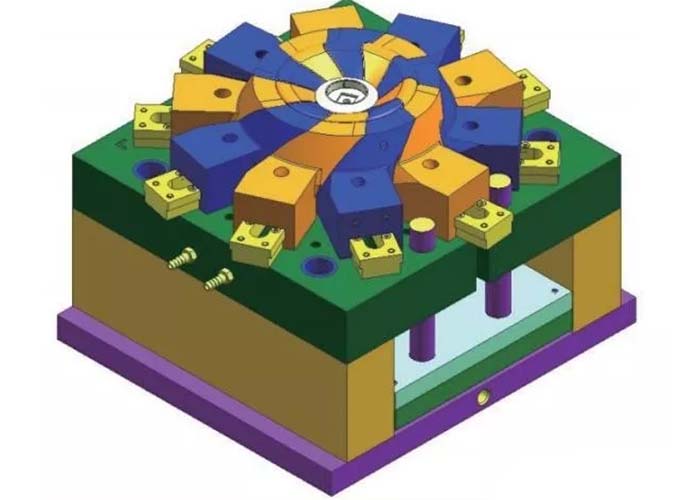Why injection mold materials selection requirements are important?
The selection of injection mold materials is a relatively important issue in injection mold design and injection mold manufacturing, which directly affects a series of aspects such as the injection mold manufacturing process, injection mold service life, injection molding quality of plastic molded parts, and injection mold processing costs.
Because of this, domestic and foreign scholars have developed new types of die steels with good serviceability and processing performance, and small heat treatment deformation, such as pre-hardened steels, new quenched and tempered steels, and maraging steels.
In order to improve the life of the injection mold, a lot of research and engineering practices have been done in the surface strengthening treatment of the molded parts, and good results have been achieved. So far, the above-mentioned research and development work is still being carried out continuously, and the results obtained are being promoted vigorously.
Injection mold materials selection requirements for forming parts
The working conditions of plastic injection molds generally must be at 150~200℃. In addition to being subjected to a certain pressure, they are also affected by temperature.
According to the different use conditions and processing methods of plastic injection molding molds, the basic performance requirements of steel for plastic injection mold materials for forming parts are roughly summarized as follows.
Injection mold materials selection requirements 1. Sufficient surface hardness and wear resistance
The hardness of the plastic injection mold is usually below 50-60 HRC, and the heat-treated injection mold should have sufficient surface hardness to ensure that the mold has sufficient rigidity. When the injection mold is working, due to the filling and flow of the plastic, it has to withstand greater compressive stress and friction.
The injection mold is required to maintain the accuracy of the shape and the stability of the dimensional accuracy to ensure that the injection mold has a sufficient service life. The wear resistance of the injection mold depends on the chemical composition and heat treatment hardness of the steel, so increasing the hardness of the mold is beneficial to improve its wear resistance.
Injection mold materials selection requirements 2. Good machining performance
It is necessary to choose a steel grade that is easy to cut and can obtain high-precision parts after processing. For this reason, medium carbon steel and medium carbon alloy steel are the most commonly used, which is especially important for large injection molds. For parts that require EDM, the burn-hardened layer of this steel grade is also required to be thin.
Injection mold materials selection requirements 3. Excellent polishing performance
For high-quality plastic products, the surface roughness of the cavity is required to be small. Therefore, the working surface of injection molded parts needs to be polished to a mirror surface, Ra≤0.05μm, and the hardness of the steel should be 35~40 HRC.
If the surface is too hard, it will be difficult to polish. For this reason, the selected steel requires fewer material impurities, uniform and compact microstructure, no fiber directionality, and no pitting or orange peel defects during polishing.
Injection mold materials selection requirements 4. Good thermal stability
The shape of plastic injection mold parts is often complex and difficult to process after quenching. Therefore, materials with good thermal stability should be selected as much as possible to ensure that the molded parts have a small linear expansion coefficient after heat treatment, small heat treatment deformation, and dimensional changes caused by temperature differences.
The rate is small, the metallographic structure and the mold size are stable, and they can be reduced or no longer processed to ensure the mold’s dimensional accuracy and surface roughness requirements.
Injection mold materials selection requirements 5. Good wear resistance and fatigue resistance
The injection mold cavity is not only scoured by the high-pressure plastic melt but also affected by the temperature stress of alternating cold and heat.
General high-carbon alloy steel can be heat treated to obtain high hardness, but the toughness is poor, and surface cracks are easily formed, so it is unsuitable for use.
The selected steel grade should enable the injection mold to reduce the number of polishing and repair molds, maintain the dimensional accuracy of the cavity for a long time, and reach the service life of mass production.
Injection mold materials selection requirements 6. Corrosion resistance
For some plastics, such as polyvinyl chloride and flame-retardant plastics, steel grades with corrosion resistance must be considered.
In addition, when selecting injection mold materials, you must also consider preventing scratches and bonding. If there is relative movement between the two surfaces, try to avoid selecting injection mold materials with the same structure. Under special conditions, one side can be plated or nitrided to make the two sides have different surface structures.
You may also be interested in the below articles.
Summary Of 50 Injection Mold Structure Operation Dynamic Diagrams
Auto Parts Stamping Die Design Concept




